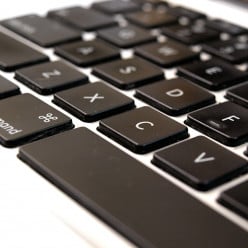Music notation: how do you know WHEN to use WHAT accidentals (flats, sharps, nat
Music notation: how do you know WHEN to use WHAT accidentals (flats, sharps, naturals)?
In reference to this:
http://hubpages.com/question/61634/can- … f-gb-major
I'd just like to know why the double flats are needed. I never "got" this part of music theory, so if you could enhance my understanding about this I'd appreciate it. (I know that it's dictated by the key signature, but I still don't quite get how to determine which accidental is appropriate.) Are there any web resources that will be helpful?I don't quite understand if this means a Gb dim7 or an Fdim7 (which would be the naturally occuring diminished chord in the key of Gb), but i suppose it doesn't matter. I'll try to explain.
The key signature does dictate when double flats or double sharps are needed in certain situations. However, if you ask the question "what are the pitches in a Gb dim7 triad," you can tell what they are regardless of the key. They are Gb, B double flat, D double flat, and F triple flat! Ha! You'll never see this thankfully.
The point is, you must skip letter names when spelling triads of any kind. This is the reason you end up with double flats and double sharps is so that you have the correct spelling of whatever harmony you're using.
In the instance of an Fdim7, the letters are F, Ab, Cb, E-double flat. Remember we have to skip letters when spelling these triads. This is not just for the sake of following the rules. If we were to spell this same triad with different letters it would imply a different key area. Fdim7 would usually resolve to Gb major or minor. If we re-spell the triad as a G#dim7 (I use G# instead of Ab because it's neater), the letters are G#, B, D, F. We have all the same pitches as the Fdim7, but the G#dim7 spelling implies the key of A major or minor.
I'm sorry that's so confusing. The main idea is that there are harmonic implications for the ways notes are spelled.
Check out http://www.dolmetsch.com/index.htm and go to music theory for all questions regarding theory. It's got everything.Each musical scale has only the sharps in key signatures or only the flats, except C-major (no sharps and no flats).
If you are in the scale with sharps, you can't use the flats (e.g. in E-major you can't use D-flat, but C-sharp). Similarly, if you are in the scale with flats in key signatures, you can't use sharps (e.g. in F-major you can't use A-sharp, but B-flat).daddyjb's answer is very good, but two small things from his answer need to be corrected. A couple of times he uses the term "triad" when he's actually talking about a four-note chord. (A triad is a three-note chord.) And the idea of F triple flat (in the Gb dim7 chord) must have been written a bit hastily. It actually should read as F double-flat. That's because F down to E is already a half-step (and so Fb is the same note as E; Fbb is the same note as Eb).
In general, you use the notation that most clearly reveals the function or 'meaning' of the note to which it applies.
First, that means not using the wrong enharmonic form of a note--for instance, in the key of D major, which has 2 sharps, F# and C#, you should not normally use Db. That is the point that stratocarter is addressing. (Though it should be noted that his comment shouldn't be interpreted to mean that flats never appear in a sharp key or vice versa; it happens regularly, especially in minor keys.)
Second, it often means using the chromatic form appropriate to direction in which a non-chord tone proceeds, as in the common case where a chromatic scale uses sharps ascending but flats descending.
Third, it means using the enharmonic form appropriate to the chord. That is what daddyjb is talking about. For example, let's take the diminished seventh chord in C: B-D-F-Ab. Although the Ab sounds the same as G#, one should choose Ab here because we want to indicate that the B is the root; since chords are normally built in thirds, the diminished 7th with G# would be G#-B-D-F. In other words, G# would be the root. (It would also suggest the key of A, not C.)
Applying that to the example that kicked this discussion off, Gb Major would have the diminished 7th F-Ab-Cb-Ebb. Note that this is enharmonically the same as the chord we just examined! But spelling in thirds requires that we start with the F--and also necessitates the double flat.
By the way, technically the diminished 7th chord is not 'in' any *major* key; it's only found naturally in minor keys. (To illustrate this point, recall that we had to use an accidental to spell this chord in the key of C!) But borrowing from the parallel minor hasn't been unusual for more than two centuries now, so that's a nitpick for practical purposes.
Related Discussions
- 22
What is your most common spelling mistake?
by Helen Murphy Howell 12 years ago
What is your most common spelling mistake?If I'm writing too fast I tend to mix up 'their' and 'there'. Also the words poison and religion are pains for me to remember.
- 17
Double check your spelling when putting in the title (URL)
by Mary Hyatt 10 years ago
I'm sure you folks are too smart to do this, but I just did! I misspelled the word "depression" in my latest Hub! Taught me a good lession: go slower. Now it's there and there is nothing I can do about the URL. I did edit the title to correct.






